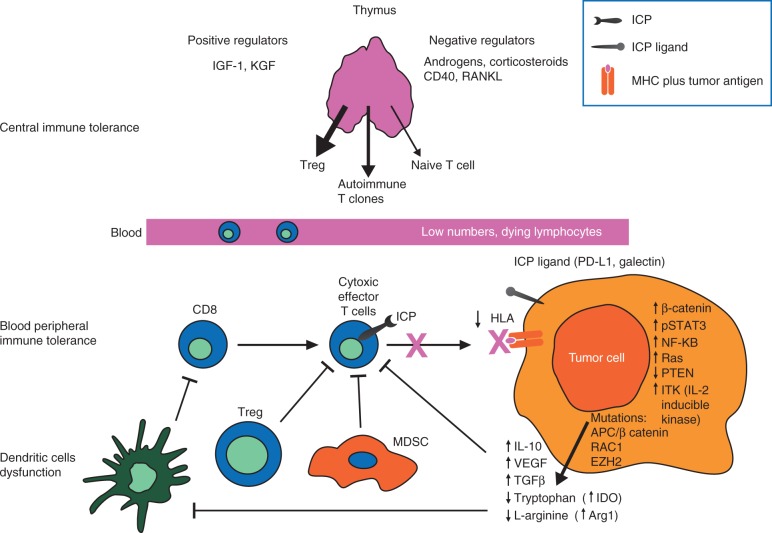Figure 1.
Mechanisms of immune tolerance. Immune tolerance involves a range of overlapping mechanisms that involve not only the periphery (e.g. tumor site), but also central lymphoid organs, especially thymus. They include intrathymic negative regulation (central), decreased costimulation, anergic signals from tumor cells, and immunoregulation (e.g. from Treg and MDSC [peripheral]). Arg1, arginase 1; HLA, human leukocyte antigen; ICP, immune checkpoint protein; IDO, indoleamine 2,3-dioxygenase; IGF-1, insulin-like growth factor; IL-10, interleukin 10; KGF, keratinocyte growth factor; MDSC, myeloid-derived suppressor cell; MHC, major histocompatibility complex; NF-κB, nuclear factor kappa-B; PD-L1, programmed death ligand 1; STAT, signal transducer and activator of transcription; RANKL, receptor activator of nuclear factor kappa-B ligand; TGF, transforming growth factor; Treg, regulatory T cells; VEGF, vascular endothelial growth factor.

